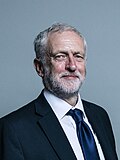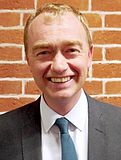UK 2017 general election
|
|
|||||||||||||||||||||||||||||||||||||||||||||||||||||||||||||||||||||||||||||||||||||||||||||
|---|---|---|---|---|---|---|---|---|---|---|---|---|---|---|---|---|---|---|---|---|---|---|---|---|---|---|---|---|---|---|---|---|---|---|---|---|---|---|---|---|---|---|---|---|---|---|---|---|---|---|---|---|---|---|---|---|---|---|---|---|---|---|---|---|---|---|---|---|---|---|---|---|---|---|---|---|---|---|---|---|---|---|---|---|---|---|---|---|---|---|---|---|---|
|
|||||||||||||||||||||||||||||||||||||||||||||||||||||||||||||||||||||||||||||||||||||||||||||
|
|
|||||||||||||||||||||||||||||||||||||||||||||||||||||||||||||||||||||||||||||||||||||||||||||
|
All 650 seats in the House of Commons 326 seats needed for a majority |
|||||||||||||||||||||||||||||||||||||||||||||||||||||||||||||||||||||||||||||||||||||||||||||
| Opinion polls | |||||||||||||||||||||||||||||||||||||||||||||||||||||||||||||||||||||||||||||||||||||||||||||
| Turnout | 68.8% ( |
||||||||||||||||||||||||||||||||||||||||||||||||||||||||||||||||||||||||||||||||||||||||||||
|
|||||||||||||||||||||||||||||||||||||||||||||||||||||||||||||||||||||||||||||||||||||||||||||

A map of UK parliamentary constituencies
*Seat figure does not include Speaker of the House of Commons John Bercow, who was included in the Conservative seat total by some media outlets. |
|||||||||||||||||||||||||||||||||||||||||||||||||||||||||||||||||||||||||||||||||||||||||||||
|
|||||||||||||||||||||||||||||||||||||||||||||||||||||||||||||||||||||||||||||||||||||||||||||
The United Kingdom general election of 2017 took place on Thursday 8 June. Each of the 650 constituencies elected one Member of Parliament (MP) to the House of Commons. Under the Fixed-term Parliaments Act 2011 an election had not been due until 7 May 2020, but a call by Prime Minister Theresa May for a snap election was ratified by the necessary supermajority in a 522–13 vote in the House of Commons on 19 April 2017.
The Conservative Party (which had governed as a senior coalition partner from 2010 and as a majority government from 2015) was defending a working majority of 17 seats against the Labour Party, the official opposition led by Jeremy Corbyn. May had said that she hoped to secure a larger majority for the Conservative Party in order to "strengthen [her] hand in [the forthcoming Brexit] negotiations".
Opinion polls had shown consistent leads for the Conservatives over Labour. From a 20-point lead, the Conservatives' lead began to diminish in the final weeks of the campaign. In a surprising result, the Conservatives made a net loss of 13 seats with 42.3% of the vote (its highest share since 1983), while Labour made a net gain of 30 seats with 40.0% (its highest since 2001). In terms of vote share for the two main parties, this was the closest result since February 1974 and the highest combined share since 1970. The Scottish National Party and the Liberal Democrats, the third- and fourth-largest parties, both lost vote share; media coverage characterised the election as a return to two-party politics. The SNP, which won 56 of the 59 Scottish seats at the previous general election in 2015, lost 21 seats. The Liberal Democrats made a net gain of four seats. UKIP, the third-largest party in 2015 by number of votes, saw its share reduced from 12.6% to 1.8%. Plaid Cymru gained one seat, giving it four seats. The Green Party retained its single seat, but saw its share of the vote reduced. In Northern Ireland, the DUP won 10 seats, Sinn Féin won seven, and independent unionist Sylvia Hermon retained her seat. The SDLP and UUP lost all their seats. The Conservatives remained in power as a minority government, having secured a confidence and supply deal with the DUP.
...
Wikipedia






